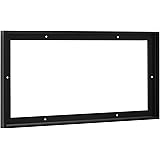Crafting Ambiance: Your Guide to Elevated Living Room Decor Lights
Does your living room truly feel like the heart of your home after watching the beautiful visuals above? The right illumination can transform any space, turning a simple room into a welcoming sanctuary. When it comes to living room decor lights, it’s about so much more than just brightness; it’s about crafting an atmosphere, painting with light, and enhancing every detail of your interior design.
This guide dives deep into the strategic use of lighting, drawing inspiration from the tranquil elegance often associated with earthy shades and sophisticated interiors. We’ll explore how to choose, place, and layer lights to create a living room that doesn’t just look good, but feels right.
Why Lighting is the Unsung Hero of Living Room Design
Imagine a symphony orchestra without its conductor, or a masterpiece painting without its frame. Lighting plays a similar, pivotal role in your living room, acting as the ultimate mood-setter and visual guide. It dictates how colors are perceived, how textures feel, and even how spacious a room appears. Poor lighting can make a grand room feel cramped, while expert lighting can make a modest space feel expansive and inviting.
Think of light as the very air your decor breathes. It’s the element that connects all other design choices, from your carefully selected furniture to the subtle earthy shades on your walls. Without thoughtful living room lighting, even the most exquisite decor can fall flat. It’s not just about seeing; it’s about *feeling* the space.
1. The Art of Layering: Types of Living Room Decor Lights
Just like a chef builds flavor with multiple ingredients, a designer builds atmosphere with layers of light. Relying on a single overhead fixture is like listening to music in mono – functional but lacking depth. The secret to dynamic living room lighting design lies in combining different types of light, each serving a unique purpose.
Ambient Lighting: The Foundation
This is your general, overall illumination, providing a comfortable level of brightness that allows you to move freely and see everything in the room. It’s like the base layer of paint on a canvas. Common sources include:
- Recessed Lights: Discreetly placed in the ceiling, offering uniform light without visual clutter.
- Flush-Mount or Semi-Flush-Mount Fixtures: Good for lower ceilings, providing broad illumination.
- Chandeliers: A grand statement piece that also offers significant general light, acting as a decorative anchor.
When selecting ambient lights, consider their warmth (measured in Kelvin, K). For cozy living rooms, a warmer light (2700K-3000K) mimics the glow of incandescent bulbs, promoting relaxation.
Task Lighting: For Purposeful Activity
As the name suggests, task lighting is focused illumination for specific activities like reading, knitting, or working on a laptop. It’s the spotlight that makes sure you can comfortably engage in your hobbies without strain. Think of it as the clear print on a book.
- Floor Lamps: Perfect next to a reading chair or sofa, providing direct, adjustable light.
- Table Lamps: Versatile and decorative, they offer localized light for end tables or consoles.
- Adjustable Wall Sconces: Can be positioned to direct light precisely where needed.
The key here is directing light onto the task, minimizing shadows, and preventing glare. A good task light brightens your activity without overwhelming the rest of the room’s ambiance.
Accent Lighting: The Decorative Touches
This layer is all about highlighting specific features, adding drama, and drawing attention to architectural details, artwork, or collectibles. Accent lighting is like the jewelry of your room, catching the eye and adding sparkle.
- Picture Lights: Mounted above artwork to illuminate it directly.
- Track Lighting: Adjustable heads allow you to direct light precisely at multiple points of interest.
- Spotlights (Recessed or Surface-Mounted): Perfect for washing a wall with light or emphasizing a textured surface.
- Dimmable Lamps: Even small lamps can act as accent lights when dimmed, creating a warm glow in corners.
By using accent lighting, you sculpt the space, creating focal points and adding visual interest that makes your living room feel intentionally designed and deeply personal.
2. Embracing Earthy Shades: Harmonizing Light with Natural Tones
The video’s emphasis on #earthyshades speaks volumes about creating a grounded, serene atmosphere. When working with a palette of warm beiges, terracotta, deep greens, and rich browns, your choice of decor lights becomes paramount. The light itself can either enhance or diminish these natural tones.
Consider light temperature once more. Cooler lights (above 4000K) can make earthy tones appear flat or even slightly gray. However, a warmer light (2700K-3000K) brings out the richness and depth in these hues, making terracotta glow and deep greens feel more vibrant and alive. It’s like the sun setting on a natural landscape, casting a golden, inviting wash.
Furthermore, the fixtures themselves can seamlessly integrate with your earthy palette. Look for materials like:
- Woven Rattan or Jute: For a bohemian or coastal touch.
- Ceramic or Stoneware: Adding artisanal texture and grounded elegance.
- Solid Wood or Bamboo: Introducing natural warmth and grain.
- Linen or Cotton Shades: Diffusing light softly and adding a textural element.
- Matte Black or Bronze Metals: Providing a sophisticated, industrial edge that still grounds the space.
These materials act as extensions of your earthy theme, ensuring that even when the lights are off, the fixtures contribute to the aesthetic. They are not just light sources; they are sculptural elements that complement your chosen design scheme, making the overall interior design feel cohesive and calming.
3. Strategic Placement: Where to Put Your Living Room Decor Lights
Once you understand the types of light and how they interact with your color scheme, the next crucial step is placement. This is where your living room truly comes alive, guiding the eye and shaping perceptions. Think of it as staging a scene for a play, where every light cue has a purpose.
Firstly, avoid the “single ceiling light” trap. This often creates a harsh, shadowy environment. Instead, distribute your light sources strategically:
- Corners and Edges: Placing lamps in corners helps to visually expand the room and eliminate dark, cavernous areas.
- Varying Heights: Mix ceiling lights with floor lamps and table lamps to create a dynamic visual interest and prevent a flat, one-dimensional look. A tall floor lamp next to a shorter table lamp creates visual rhythm.
- Overhead vs. Eye-Level: While ambient light often comes from above, ensure you have plenty of light sources at eye level (table lamps, sconces) to create a more intimate and personal atmosphere.
- Highlighting Features: Use accent lights to draw attention to your favorite artwork, a beautiful plant, or a textured wall, creating focal points that capture attention.
Remember that the goal is balance. No single area should be too bright or too dim. The living room should flow effortlessly from one lit zone to another, much like a well-composed painting directs your gaze through its various elements. Consider using dimmers on most of your fixtures. Dimmers are like volume controls for light, allowing you to instantly adjust the mood from a bright, functional space to a cozy, intimate retreat.
4. Beyond the Bulb: Integrating Smart Lighting and Unique Fixtures
As interior design evolves, so do the tools at our disposal for creating stunning spaces. Modern living room lighting offers opportunities for unparalleled convenience and aesthetic expression.
Consider embracing smart lighting systems. These allow you to control brightness, color temperature, and even color (for some bulbs) from your smartphone or voice assistant. Imagine adjusting your living room’s ambiance to a warm, sunset glow for a movie night, or a brighter, neutral light for an afternoon of cleaning, all with a simple command. It’s like having a lighting designer on call, capable of transforming your space in an instant.
Furthermore, don’t shy away from unique and sculptural fixtures. A statement chandelier can be a piece of art hanging from your ceiling, reflecting light in captivating ways. A floor lamp with an unusual shape can act as a standalone sculpture, adding intrigue even when turned off. These fixtures aren’t just practical; they contribute significantly to the overall aesthetic and personality of your living room. They act as exclamation points in your decor, demanding attention and reflecting your personal style.
Ultimately, enhancing your living room decor lights is about more than just illumination. It’s about understanding how light interacts with your space, your furniture, and your mood. It’s about creating an atmosphere that resonates with you and your loved ones, making your living room a truly warm, inviting, and beautifully lit haven.











